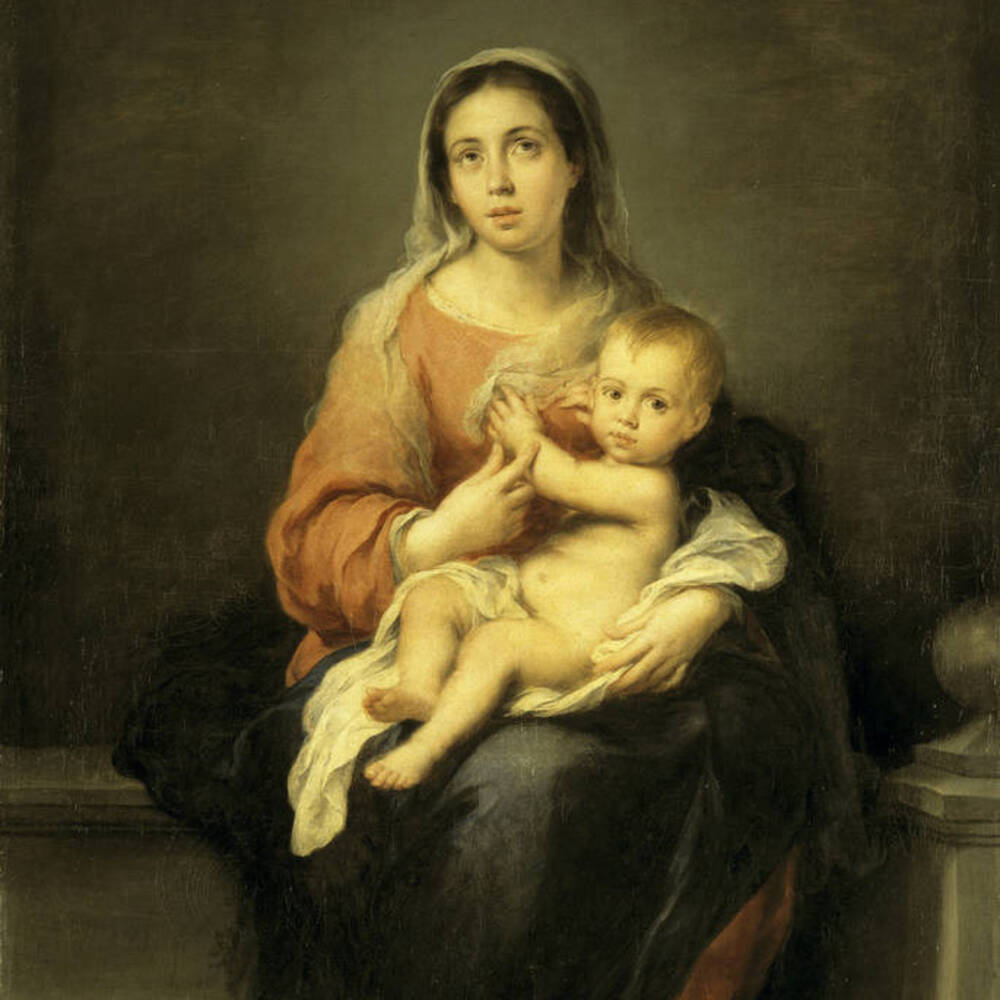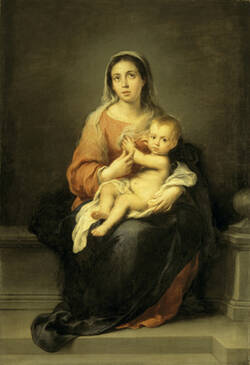Murillo was one of the most celebrated painters in 17th-century Spain. His fame was due, amongst other things, to his numerous images of the Madonna, which were very popular. In this painting, Murillo succeeds in representing the Virgin Mary not as the unapproachable Mother of God but as a contemporary Spanish woman holding her child in a loving and tender way. This naturalistic portrayal was highly popular and was enthusiastically received by viewers both in Spain and elsewhere.
Further Media
Murillo’s Madonna and Child has seen some eventful years here in Dresden. If you look closely, you will notice how, at some places, the canvas has little circular marks where it has been repaired. Those repairs were needed to cover bullet holes in the painting.
The backstory to those repairs starts in 1848 with a wave of unrest sweeping Europe. In Germany, those political upheavals are known as the March Revolution. The revolutionary forces called for a united Germany to replace the patchwork of more and less powerful German principalities, and for democratic reforms. In spring 1849, the wave of uprisings also reached Dresden, with revolutionaries seeking to depose the ruler of Saxony and establish a republic. In a few days of bloody fighting, the uprising was crushed. Hundreds were left dead. But during street battles in the inner city, some bullets left their mark on Murillo’s painting.
- Location & Dating
- c. 1670/80
- Material & Technique
- Oil on canvas
- Dimenions
- 166 x 115 cm
- Museum
- Gemäldegalerie Alte Meister
- Inventory number
- Gal.-Nr. 705

